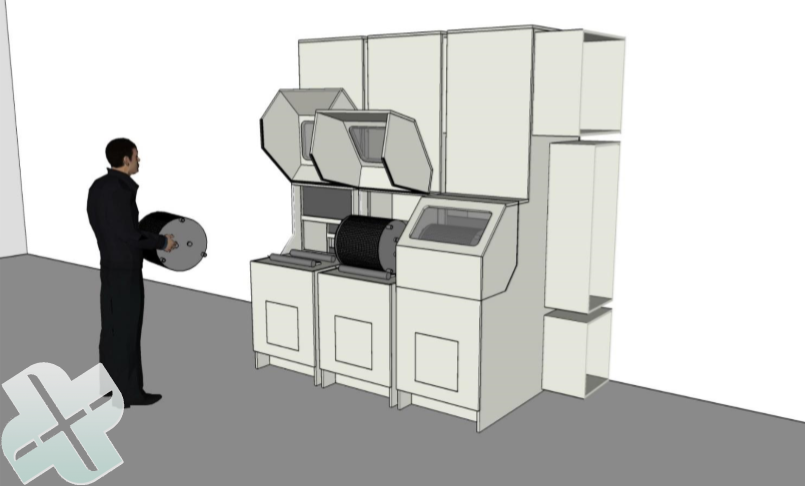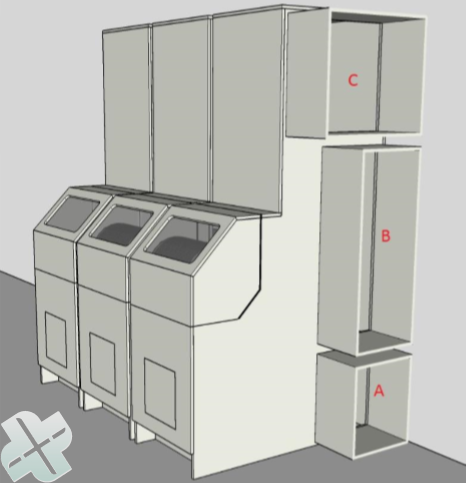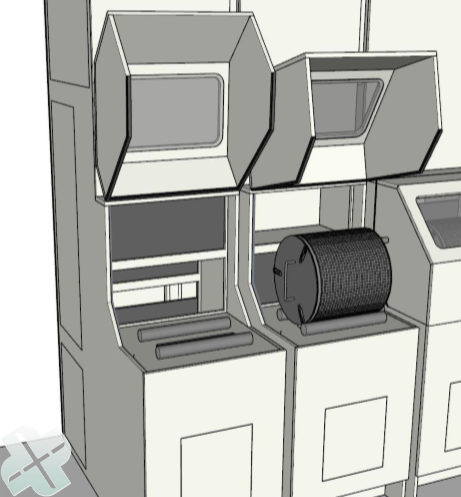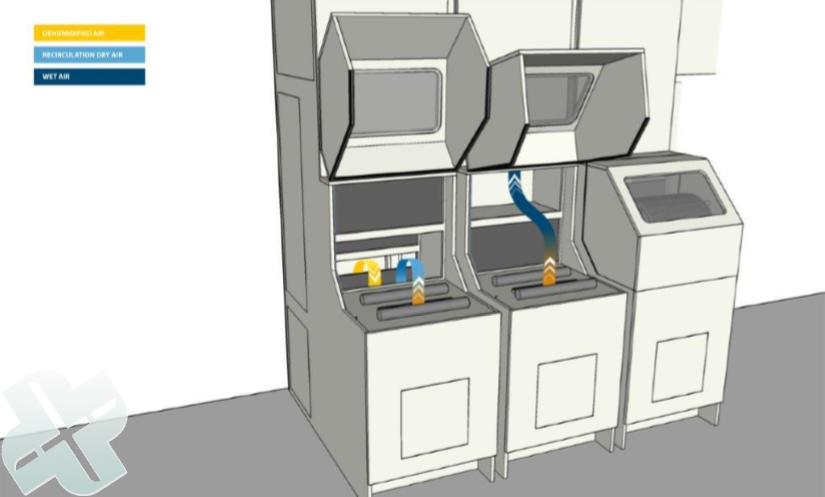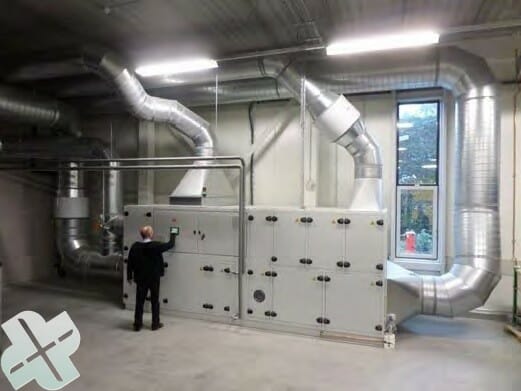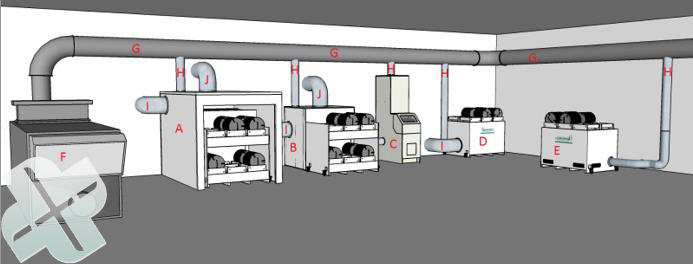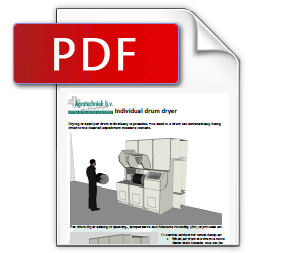
C: central airduct for outlet damp air • When air from the drum is more damp than outside, this will be dispatched.
B: central airduct for inlet outside air • Starting with heated outside air a large quantity of water is drained. • When required, dehumidified air will be added to a drum-unit to continue optimal drying.
A: Central inlet for dehumidified air • Dehumidified air will enter a drum dryer when drier air is required. • When air out of the drum is drier than outside, this will be recirculated. • Drying continues with dehydrated air.
Slide inside for extracting outside or recycled air. Optional with dehumidified air.
Outside air is warmed up to the desired temperature to absorb moisture. Outside air and dehumidified air can be mixed to decrease AH and increase drying capacity.
When air out of the drum is more damp than outside, it will be dispatched outside (middle).
When air from the drum is drier than outside, this is recirculated and mixed with dehumidified air (left).
Final moisture from the product will be drained by dehumidified air.
On the right: Central hybrid air dryer
Agratechniek has developed a principle at which a central air dryer (F) brings the dried air to where it is needed. Various drying installations, like a closed drum dryer (A), open drum dryer (B), individual drum dryer (C), mobile drum dryer with outside air (D) and mobile drum dryer with inside air (E) are connected to a central air duct (G). Thanks to the advanced ABC process the dried air is discharged automatically to where it is needed at that moment.
During the seed drying process, a lot of moisture can be discharged using heated up outside air. Unfortunately the conditions of the outside air are not always suitable to reach the desired equilibrium moisture content at the end. Especially now that more seed companies want to receive, store and package the seed with a lower moisture content. To be able to dry the seed quickly and successfully, dried air is needed in the last phase.
 EN
EN
